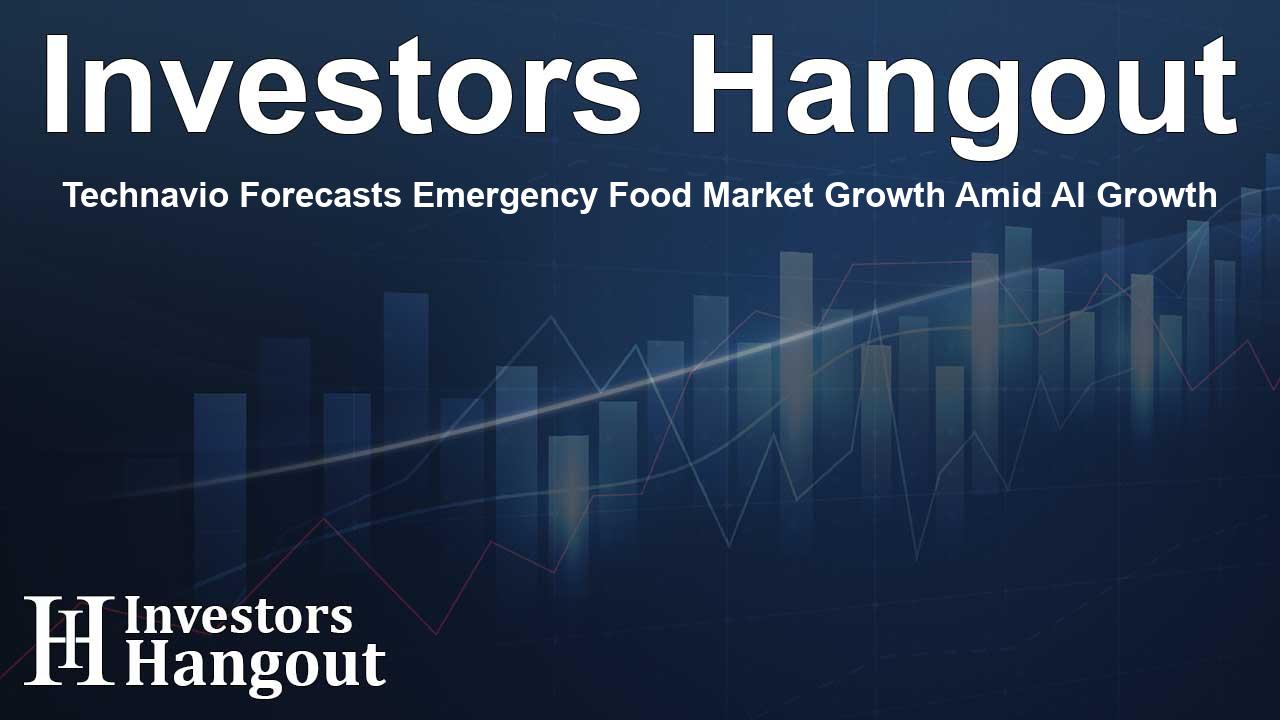Technavio Forecasts Emergency Food Market Growth Amid AI Growth

Introduction to Market Potential
The emergency food market is poised for significant expansion, reflecting a growth of USD 3.20 billion from 2024 to 2028. This remarkable surge is primarily driven by the flourishing organized retail sector and an increasing focus on AI innovations that streamline operations and enhance product offerings. The compound annual growth rate (CAGR) for this sector is estimated at 7.35% during the forecast period, marking a pivotal time for key players in the industry.
Market Dynamics
Key Trends
Several critical trends are reshaping the landscape of emergency food products. The rise of health consciousness among consumers has fueled the demand for organic freeze-dried foods. Items such as peanut butter, dried fruits, and infant food have become popular choices for emergency supplies. The emphasis on dietary preferences, including gluten-free, vegan, and allergen-free options, responds to an increasingly diverse consumer base. Moreover, climatic events like hurricanes and floods drive individuals to prepare with reliable emergency food supplies, underlining the importance of secure food storage solutions.
Market Segmentation
Market segmentation analyses reveal diverse categories. Products range from ready-to-eat meals to non-perishable options such as pasteurized milk and cereals. Distribution channels include both brick-and-mortar retailers and online platforms, catering to varying consumer needs. Regional coverage encompasses North America, Europe, APAC, South America, and the Middle East, ensuring widespread access to emergency food solutions.
Challenges in the Industry
Food Preservation Techniques
Despite the positive growth outlook, the emergency food market grapples with challenges unique to food preservation and shelf life. Techniques like freeze-drying are essential for prolonging the usability of emergency foods, yet they often come at higher costs. Non-freeze-dried alternatives remain more affordable yet fall short in terms of shelf life, which can pose a dilemma for consumers seeking the best options for long-term storage.
Regulatory Environment
Furthermore, manufacturers must navigate a labyrinth of stringent regulations that safeguard food safety standards across various segments. Compliance with standards like ISO 22000 and BRC Food ensures that the highest quality products reach consumers. This level of scrutiny demands considerable investment from manufacturers to mitigate the risk of contamination and maintain market credibility.
Technological Innovations Driving Growth
AI technology plays a crucial role in transforming the emergency food market. By employing advanced analytics and automation, companies can enhance their operational efficiency and develop innovative products that meet evolving consumer demands. This strategic integration of AI is anticipated to lead to improved product quality and optimization of supply chains, further solidifying market growth.
Conclusion: Ensuring Food Security
The emergency food market serves a vital role in ensuring food security in times of crisis, driven by consumers' increasing awareness of the need for preparedness. From military applications to ordinary households, these products are designed to withstand diverse circumstances. As we look to the future, innovation through technology and responsiveness to consumer preferences will dictate success in this essential industry.
Frequently Asked Questions
What is the projected growth of the emergency food market?
The emergency food market is projected to grow by USD 3.20 billion from 2024 to 2028, with a CAGR of 7.35% during this period.
What are the key trends driving the market?
The key trends include the demand for organic freeze-dried foods, increased focus on health-conscious options, and preparedness for climate-related disasters.
How does AI contribute to the emergency food market?
AI enhances operational efficiency, improves product quality, and helps companies innovate their offerings to meet consumer demands.
What challenges does the market face?
The market faces challenges in food preservation techniques and adhering to strict food safety regulations.
What types of products are popular in the emergency food sector?
Popular products include ready-to-eat meals, non-perishable milk, dried fruits, and infant foods catering to a variety of dietary needs.
About Investors Hangout
Investors Hangout is a leading online stock forum for financial discussion and learning, offering a wide range of free tools and resources. It draws in traders of all levels, who exchange market knowledge, investigate trading tactics, and keep an eye on industry developments in real time. Featuring financial articles, stock message boards, quotes, charts, company profiles, and live news updates. Through cooperative learning and a wealth of informational resources, it helps users from novices creating their first portfolios to experts honing their techniques. Join Investors Hangout today: https://investorshangout.com/
Disclaimer: The content of this article is solely for general informational purposes only; it does not represent legal, financial, or investment advice. Investors Hangout does not offer financial advice; the author is not a licensed financial advisor. Consult a qualified advisor before making any financial or investment decisions based on this article. The author's interpretation of publicly available data shapes the opinions presented here; as a result, they should not be taken as advice to purchase, sell, or hold any securities mentioned or any other investments. The author does not guarantee the accuracy, completeness, or timeliness of any material, providing it "as is." Information and market conditions may change; past performance is not indicative of future outcomes. If any of the material offered here is inaccurate, please contact us for corrections.